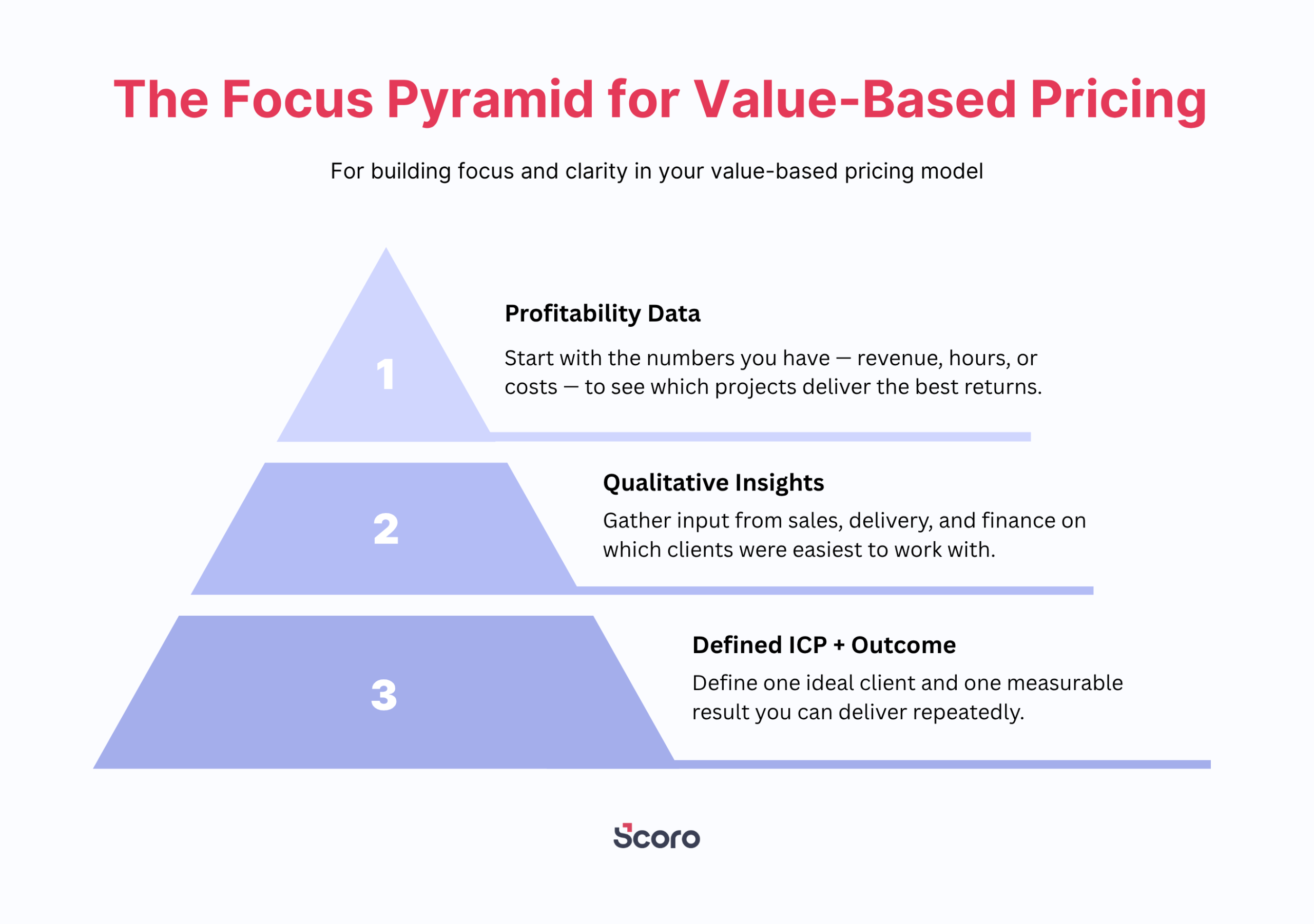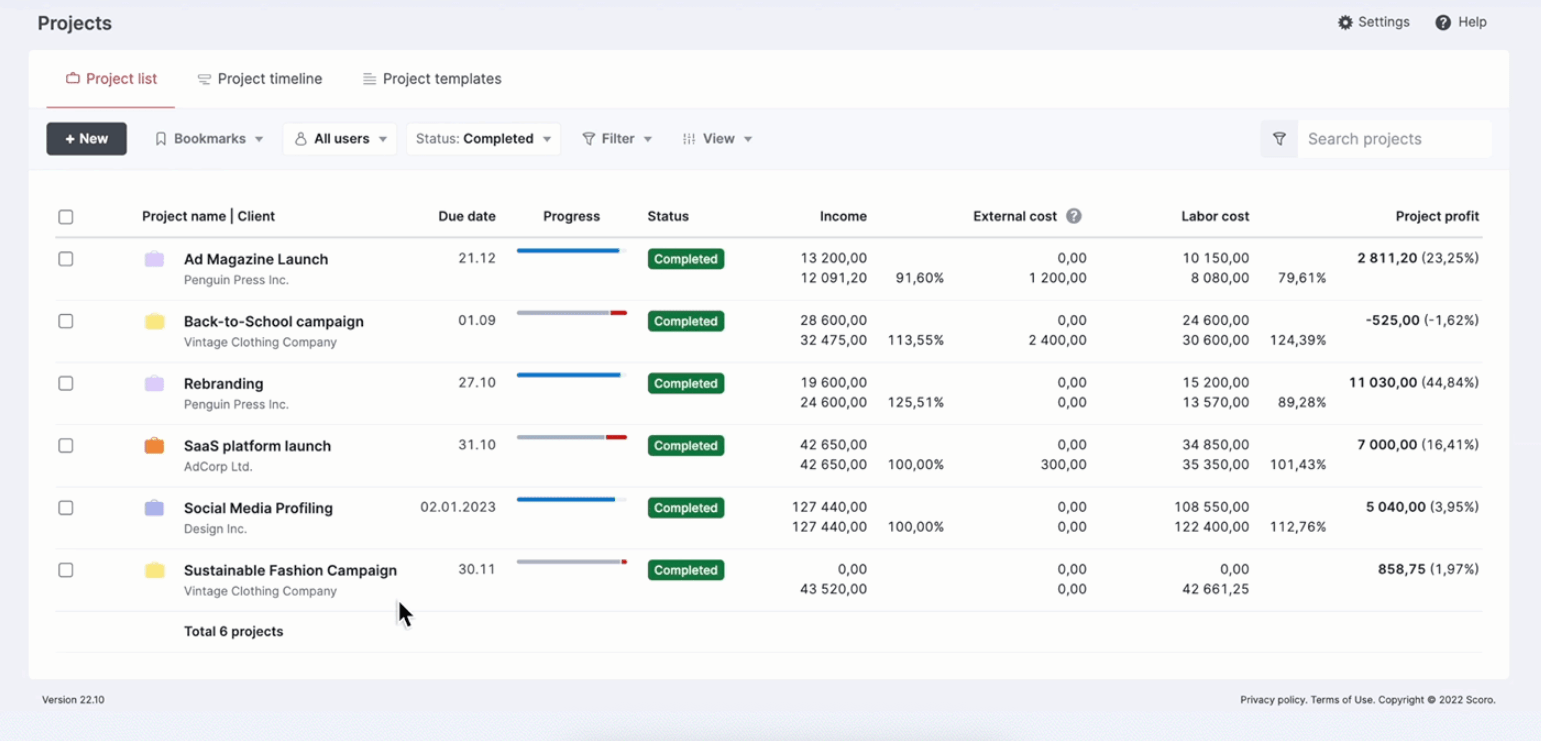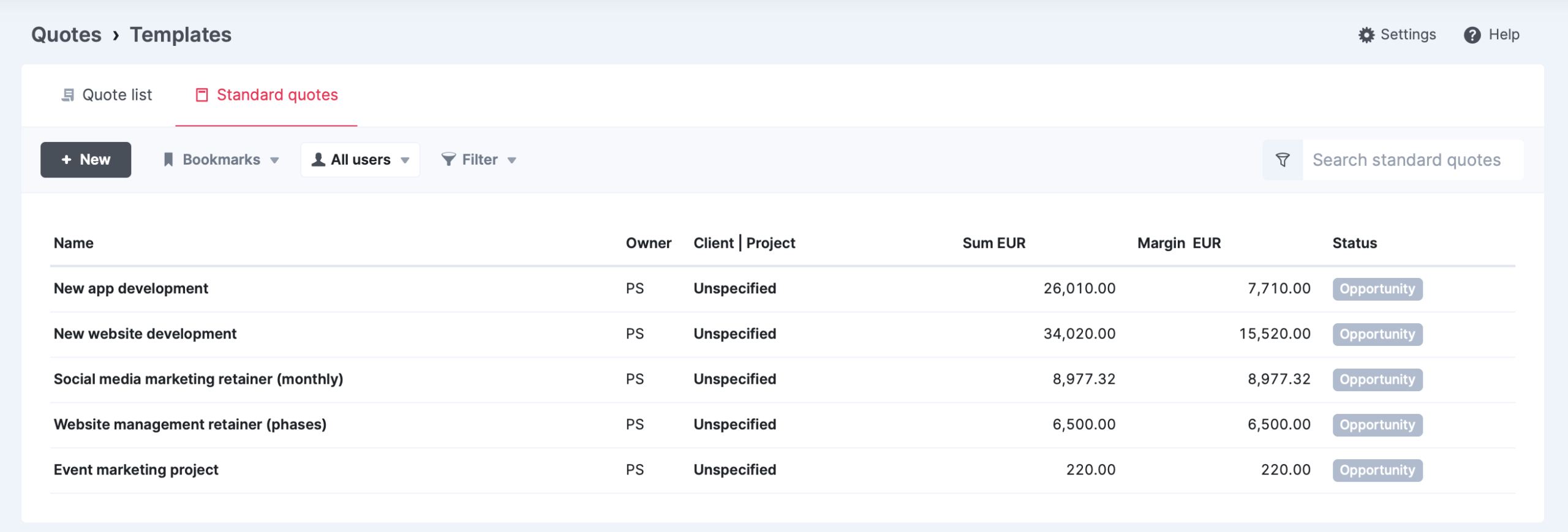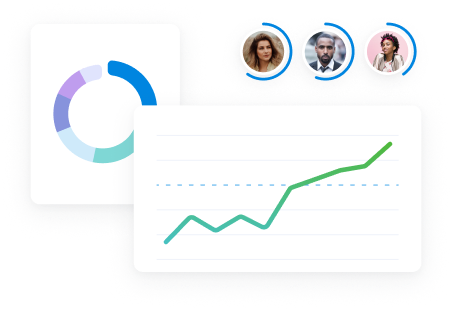Most agencies and consultancies hit the same wall as they grow:
Projects keep selling, but profits don’t.
You win work by being flexible and “tailored,” but that flexibility comes at a cost—proposals balloon, delivery gets messy, and margins quietly disappear.
Suddenly, your team’s creativity is buried under admin, scope creep, and endless firefighting.
That’s the pattern Brian Kessman has spent the last decade helping firms break.
Brian runs Lodestar Agency Consulting, helping agencies and consultancies turn their expertise into scalable, outcome-driven solutions. And stop selling time for money.
As he said on this episode of The Handbook podcast:
You can’t fix a broken business model with better operations.
The problem isn’t the process. It’s the model.
This article builds on that conversation. Diving deeper into Brian’s ideas on how to shift from selling outputs (hours and deliverables) to selling outcomes and value (business results), and what that transformation looks like in practice.
We’ll unpack:
- How to shift from selling time to selling value
- How to price around outcomes, not effort
- A 4-step playbook to productize your value and scale profitably
The mindset shift: From selling time to selling value
If you run a services firm, you’ve probably been told to “productize your services.”
But the real shift isn’t the packaging. It’s the perspective.
For example, most agencies, consultancies, and practically any service based business, still sells outputs—hours, tasks, deliverables.
It’s the industry norm.
Clients, on the other hand, buy outcomes. Business impact, predictability, confidence.
That mismatch is subtle but deadly. It’s what keeps firms stuck at a certain size.
Selling time feels safe. It’s logical, trackable, easy to explain.
But it also changes how clients think.
When you sell time, clients start thinking like auditors. They ask why it takes so long instead of what it will achieve.
And that’s the heart of the shift.
You’re moving from selling outputs to selling outcomes.
You’re not throwing away your cost model. You’re just flipping the story you tell around it.
A real example: From fixed fees to value-based pricing
Before working with Brian, a 1,000-person consultancy (~$150M revenue) priced projects as fixed fees.
They scoped the same types of work again and again, and each proposal took a week to complete.
Like most firms, they were also giving away strategic thinking for free. Treating it as pre-sales effort rather than value.
Brian’s team helped them rethink the model from the ground up.
They sharpened their positioning (“who we help and what problems we solve”), then redesigned offers around outcomes, not activities.
They trained teams to talk about results like:
- Reducing project overruns by 25%
- Accelerating revenue recognition
- Improving financial visibility across programs
Internally, they still tracked hours (for capacity planning, forecasting, and margin control etc.)
But, externally, they stopped leading with them.
They didn’t stop tracking time, they stopped anchoring the price to it.
And their prices increased by up to 66%, adding €600K–€1.5M in new profit.
That’s the mindset shift in action—manage by time, price by value.
Once you see your business through that lens, the next step is learning how to express it—so clients stop buying hours and start buying outcomes.
So, what do clients actually value?
Once you stop anchoring your price to hours, the next question becomes:
“What should you anchor it to instead?”
The answer: outcomes.
Remember, clients don’t buy your process or deliverables. They buy measurable progress toward a business result.
And while that progress might look like stronger positioning, faster delivery, or a more effective website, it always ties back to one thing: money.
Because that’s why any company hires a professional services firm in the first place. To grow revenue,
And that’s the foundation of productizing your value.
But, the first rule of value-based pricing isn’t to “charge more.”
It’s to redefine what’s valuable in the client’s eyes. And then build your pricing conversation around that.
For example, it’s common for firms jump straight into pitching solutions:
- “We can refresh your brand.”
- “We’ll streamline your project workflow.”
- “We can audit your marketing funnel.”
But before you talk about solutions, you need to diagnose the problem.
Start by asking layered, open-ended questions that uncover the real business pain behind the request:
- “Why do you want a new website right now?”
- “What’s not working as it should?”
- “What happens if nothing changes?”
- “How does this impact sales, engagement, or delivery performance?”
Each answer gives you context. And helps the client articulate the problem in business terms.
Next, quantify the pain.
If they say, “Conversion rates on our site have dropped 30%,” ask what that means financially:
“Roughly how much revenue is being lost each month?”
If the answer is €40K, you’ve just surfaced a €480K annual gap.
Now you’re no longer discussing hours or web redesign—you’re discussing a €480K business problem.
From there, reframe the logic of investment vs. return.
You might ask:
“If solving this problem restores €480K in annual revenue, what would feel like a fair investment to achieve that?”
When clients say “€10K,” you can gently challenge it:
“A €10K investment to unlock €480K — that’s about 2%. Does that feel proportionate for something this important to your business?”
You’re not selling; you’re helping them see the economic logic of your value.
Finally, anchor your price in context.
If the client already believes the upside is €480K, a €40–60K proposal suddenly feels modest.
You can even explain that your number includes a discount for uncertainty—since you can’t control every variable.
“We can’t control every variable, so let’s call it €40K for the full engagement—a 90% discount against potential upside.”
By the end of this conversation, both sides should see the price not as a cost, but as a percentage of the outcome.
Internally, you’ll still check the numbers against your delivery cost to protect margin.
But externally, clients no longer see price as a cost. They see it as a percentage of the outcome.
That’s how you move from quoting deliverables to pricing results:
- Diagnose before prescribing
- Quantify the business impact
- Anchor to the upside, not the effort
- Check internal costs only after value is established
Once you’ve reframed how you talk about value, the next challenge is making that value repeatable.
You can’t rely on individual intuition or one-off pricing conversations forever—you need structure.
And that’s where productizing your value comes in.
The 4 tactical steps to productizing your value
Productizing your value means turning your consultative, outcome-driven thinking into a system your whole team can follow. One that keeps delivery consistent, pricing confident, and margins protected.
Here’s how to do it, step by step:
Step 1: Niche down to one ICP + one outcome
Once you stop selling deliverables and start selling outcomes, your next move is focus.
You can’t productize value if you’re solving every problem for everyone that completes your inquiry form.
Scaling begins when you commit to one ideal client profile (ICP) and one repeatable result you can deliver confidently.
Focus does three things:
- Reveals patterns: You start to see what actually drives client success
- Codifies delivery: You can document your process instead of reinventing it each time
- Sharpens your story: You move from “we can help” to “we help firms like yours achieve this result.”
Here’s how to find your own focus:
- Review your last 10 profitable projects: Which types of clients saw the biggest transformation and were easiest to work with?
- Quantify the outcome you delivered: Did you help them increase inbound leads, shorten sales cycles, raise conversion rates, or reduce delivery time? Choose something your clients actually measure and care about.
- Validate it internally: Is it repeatable, measurable, and profitable to deliver?
- Fill in the sentence: Once you’ve found your focus, fill in this focus statement “We help [ICP] achieve [Outcome] in [Timeframe]”

For example a creative agency might review its projects and sees a clear pattern:
Its best results come from helping B2B tech firms reposition their brand and rebuild their website to increase inbound leads within three months.
Which means their new focus statement becomes:
“We help B2B tech firms reposition their brand and grow inbound leads by 40% in 12 weeks.”
That single line becomes the foundation for every offer, proposal, and pricing conversation that follows.
You can use a professional services automation (PSA) tool like Scoro to do this.
In Scoro’s “Profitability by projects” view, you can instantly see which projects delivered the strongest margins.
For example, in the data shown below, the Rebranding project earned a 44.8% profit, while the Back-to-School Campaign ran slightly over cost at –1.6%.
At a glance, you can compare income, external costs, labor costs, and profitability across all completed projects.

By filtering this view by client type, service line, or project category, you can start spotting patterns:
- Which clients consistently yield higher margins?
- Which project types drain profitability?
- Where is your team spending the most time relative to return?
Those insights make it easy to identify your most profitable client segment and the outcomes you deliver best. The foundation for choosing one ICP and one repeatable result to productize.
Then, complement your data with qualitative feedback from your sales, delivery, and billing teams. Numbers show where you make money; conversations reveal why.
Use these prompts to guide the discussion:
- Sales: Which clients had the clearest goals and fastest decision cycles?
- Delivery: Which projects ran most smoothly — and why?
- Billing/Finance: Which clients paid on time, approved changes quickly, and required the least chasing?
- All teams: What traits did our best projects share — scope clarity, responsiveness, collaboration style, budget discipline? What red flags showed up in projects that were profitable on paper but painful to deliver?
Combine this feedback with your Scoro data to define your best-fit client — the one that’s profitable, predictable, and easy to work with.
Step 2: Systemize how you deliver value
Once you’ve clarified who you serve and what outcome you deliver, the next step is to codify how you get clients there.
Whether you call it a framework, workflow, or delivery system, the goal is the same: to make your expertise repeatable, visible, and scalable.
It’s not a rigid process or template. It’s a clear, three-phase structure that:
- Gives clients confidence that you’ve done this before
- Keeps delivery consistent across teams
- Makes your expertise tangible and easier to sell
Structure doesn’t limit creativity; it focuses it. The framework creates the space for your best thinking to happen.
Here’s how to do it:
1. Map the journey from problem to results
You’ve already defined your ideal client and the outcome you help them achieve.
Now, look back at how your team actually delivers that result. Step by step.
Pull 3–5 recent projects for that same client type and analyze what happened between kickoff and completion.
- What stages did every successful engagement go through?
- Where did progress naturally shift from strategy to execution?
- Which client inputs or approvals marked the transitions?
You’re looking for the common pattern—typically 3–5 major phases that happen every time, even if the surface details differ.
These become the backbone of your system.
For example, the same creative agency that specializes in B2B website redesigns might look back at five recent projects for the same client type.
Across each, they see the same internal phase rhythm: Discovery → Design → Build → Launch.
So they formalize those four stages, adding predefined tasks, milestones, and budgets for each to keep delivery consistent.
And if it’s easier to visualize this, you can use a digital whiteboard like Miro or FigJam to map out each step with your team.

Invite project managers, account leads, and delivery specialists to add their perspective.
List major milestones on sticky notes, cluster them into recurring phases, and draw arrows to show the flow from strategy to execution.
Seeing it together helps spot where projects get stuck. And help you and your team agree on what “good delivery” actually looks like.
2. Use language that feels client-centric, not internal jargon
Once you’ve mapped your internal process, reframe it in language that makes sense to clients.
“Discovery,” “Design,” and “Build” describe your process—but not their outcomes.
Instead, translate each phase into outcome-oriented terms that reflect the transformation the client experiences.
For example: Reposition → Rebuild → Activate → Scale.
The internal system keeps your team structured and efficient. The external story makes the same work feel like a clearly defined journey—one that leads to tangible results.
3. Show what changes in each phase
Internally, your team still needs detailed tasks, milestones, and time tracking to stay efficient.
But externally, clients don’t buy tasks, they buy progress.
So instead of describing what you’ll do, describe what will change by the end of each phase.
Ask:
- What shifts in the client’s business?
- What decisions get made?
- What results become visible?
This reframing helps you talk about the transformation, not just the activity.
The same B2B website agency redefines its internal “Discovery → Design → Build → Launch” workflow into the client-facing framework Reposition → Rebuild → Activate → Scale.
Then they define what actually changes in each phase:
| Phase | What changes | Outcome |
|---|---|---|
| Reposition | Leadership alignment on messaging and brand direction | Clear narrative for sales & marketing |
| Rebuild | Website redesigned and optimized for buyer journey | Higher conversion rates |
| Activate | Campaigns launched with refreshed creative | Immediate lift in inbound leads |
| Scale | Ongoing optimization and performance tracking | Sustainable pipeline growth |
Internally, each of these phases still includes a structured task list—wireframes, content migration, QA, launch prep—with estimated hours and owners.
That internal detail ensures your team can manage capacity, forecast costs, and report accurately.
But externally, those same activities now ladder up to a clear story: a value journey from confusion to clarity, from a static brochure site to a growth-ready platform.
4. Test it internally
Before rolling out your new delivery framework, pressure-test it against a real project.
- Does it reflect what really happens?
- Do the transitions between phases make sense?
- Does everyone — from sales to delivery — understand and use the same terms?
Run a short workshop with your sales, delivery, and account teams to review it.
If a phase feels vague or overlaps another, refine it until each is distinct, outcome-driven, and intuitive.
Once finalized, you can:
- Build the phases as templates in whatever project management or PSA tool you use—so quoting, delivery, and reporting stay consistent
- Use the client-facing version in proposals to sell the transformation, not the time it takes to get there
For example, in Scoro, you can turn your delivery framework into quote templates so every proposal starts from a consistent structure.
Each phase can be saved as part of a reusable template, complete with prefilled descriptions, milestones, and pricing logic.
You can create a template from scratch, or simply save an existing quote as a template to reuse later.

Top Tip
Scoro also supports dynamic rates, so every new quote automatically pulls in the latest service prices and labor costs. Helping you maintain accuracy without manual updates.
When a deal is won, those phases flow seamlessly into project templates, ensuring your sales, delivery, and reporting teams all work from the same blueprint.
Step 3: Wrap It in a fixed-scope, fixed-price package
Once you’ve systemized how you deliver value, the next step is to package it—so your offers are easier to sell, scale, and price around outcomes.
That’s where productized offers come in—fixed-scope, fixed-price packages built around clear business results.
Turn Your Framework Into Offers
Start with your standardized delivery model from Step 2.
Each distinct phase or combination of phases can become its own offer—designed around what clients value most.
For example, our B2B website agency turns its internal Reposition → Rebuild → Activate → Scale framework into three clear packages:
| Offer | Includes | Outcome |
|---|---|---|
| Brand & Strategy Sprint | Reposition only | A clear narrative and buyer-aligned messaging in 4 weeks |
| Website Growth Package | Reposition + Rebuild + Activate | A conversion-focused website and lead-ready campaign in 12 weeks |
| Ongoing Optimization | Scale | Continuous testing and iteration to sustain growth |
Each package is:
- Scalable — based on proven, repeatable work
- Valuable — anchored in outcomes clients understand
- Defensible — with clear boundaries that prevent scope creep
Set pricing anchors
Once your offers are clearly defined, the next challenge is deciding what to charge.
The goal is to link what you charge to the value created, not the effort required.
You still need a solid floor price—the minimum you can charge while maintaining your target margin.
Use time-tracking data to calculate the real delivery cost per project type.
For example, let’s say a typical website rebuild takes 280 hours at €90/hr, your internal cost is €25 K.
That’s your floor price—the line below which you erode profit.
Rule of thumb:
- Internal cost × 2 = floor price (sustainable margin)
- Internal cost × 3–4 = value price (strategic engagements)
Before quoting anything, reference the client’s potential gain you identified earlier.
You’re not guessing a number—you’re assigning your fair share of the created value.
Use the simple formula: Value Price ≈ U × F × (1 – D) where:
- U = the estimated upside or business gain
- F = your fair-share percentage (typically 10–20 %)
- D = discount for uncertainty (typically 30–60 %)
Let’s return to the earlier case: a website redesign projected to help a SaaS firm recover €480K in lost sales.
If you take a 15% share and discount 40% for uncertainty:
€480K × 0.15 × 0.6 = €43K target price.
That becomes your value anchor—comfortably above your €25K floor and easy to justify.
Next, package your offer into 2–3 value-based tiers.
This turns the question from “Can we afford this?” into “Which option fits us best?”
| Tier | Includes | Outcome | Price (example) |
|---|---|---|---|
| Launch | Core website rebuild using existing messaging | Improved UX and speed | €35K |
| Growth | Reposition + Rebuild + Activate | Double inbound leads in 12 weeks | €60K |
| Scale | Full relaunch + campaign activation + optimization | Sustained pipeline growth | €90K |
Each tier serves the same ICP — whether that’s B2B tech firms or consulting clients — but reflects deeper transformation, not more hours.
And when clients hesitate, come back to the math:
“If this engagement helps recover €480K in revenue, does €40K (≈ 8%) feel proportionate for that return?”
You’re not defending a cost. You’re pricing anchoring with context.
When clients recognize their own upside first, your proposal stops feeling like a sale. And starts feeling like a sound business decision.
Top Tip
The rule of thumb and value-pricing formula are adapted from the frameworks of Alan Weiss (Value-Based Fees) and Ron Baker (Implementing Value Pricing), both of whom advocate linking fees to the client’s economic upside rather than internal effort.
Step 4: Systemizing your delivery
A value-based offer only scales if every project is delivered with the same predictability and quality that the pricing promises.
When delivery runs like a system, your experts can focus on solving client problems—not chasing admin.
How to systemize:
- Standardize your intake: Replace scattered email threads with one clear client onboarding process that captures goals, context, and scope before delivery starts. This ensures every project begins with the same clarity and prevents downstream rework.
- Build repeatable templates: Turn your best work into reusable assets—proposal templates, kickoff checklists, reporting formats, and milestone structures. This shortens setup time and ensures every engagement hits the same quality bar.
- Automate the routine: Use your PSA or project-management tool to handle repetitive admin—invoice reminders, WIP report updates, task assignments, and status summaries. The goal isn’t to remove people, but to free them to think.
- Create real-time visibility: Use dashboards to track utilization, margins, and project health across teams. When leaders can see performance mid-delivery—not after—it becomes possible to course-correct before profit leaks occur.
- Close the loop: At the end of every project, run a short retrospective. What went smoothly? Where did we lose time or margin? What can we standardize next time? Feed those insights back into your templates and pricing models.
Final thoughts
Productizing value isn’t about stripping away creativity, it’s about protecting it. It gives your team structure, your clients clarity, and your business scalability.
You still track time, tasks, and costs—you just sell them differently. You sell certainty, clarity, and outcomes instead of hours and effort.
And Scoro gives you the visibility to make that shift confidently:
- Time tracking for cost control
- Dashboards for proof of impact
- Automation for consistent delivery
Ready to turn your expertise into scalable, productized revenue?
Book a demo or get your 14-day free trial and see how Scoro helps professional-services firms structure, price, and deliver their next evolution of value.






